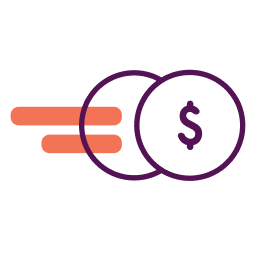Building a business requires capital, and unless you have enough cash in savings to bootstrap your business, you’ll need some form of financing to grow your company and achieve your goals.
Debt financing and equity financing are the two primary forms of obtaining capital. If you’re considering debt financing, it’s important to know what it is, how it works, and the different financing options available to you as a borrower.
What is Debt Financing?
In a traditional sense, debt financing involves a business selling bonds, bills, or notes to individual or institutional investors in return for debt capital. In return, the investors become creditors to the business and can expect to receive payment based on the debt financing agreement.
This form of debt financing is often used by large companies with a strong track record that are looking for capital expenditure.
Another form of debt financing—and one that’s more applicable to small businesses—entails a small business owner taking out a loan from a traditional or alternative business lender.
Depending on the type of loan, how you access the capital provided and the repayment terms can vary.
How Debt Financing Works
Debt financing as a small business likely won’t involve selling bonds to investors. So instead, we’ll focus more on the less traditional method.
With this form of debt financing, you typically start by determining your needs as a borrower. For example, you may need access to ongoing working capital, cash to purchase a vehicle or other equipment, or a large investment to do a number of things.
Understanding how much money you need and what loan term you would like can help you determine which type of debt financing will work best for you.
Examples of Debt Financing
There are three primary categories of business financing to consider:
- Installment loans: These small business loans have a set repayment term and monthly payment. You’ll receive a lump-sum payment from the finance company upfront, then you’ll pay back the debt over a period of time, usually with equal monthly installments. Terms loans, equipment financing, and SBA loans are common examples, and they may be secured or unsecured loans. Many installment loans offer long-term debt financing, with terms of 2 to 25 years available.
- Revolving loans: Instead of a lump sum in the beginning, these loans give you access to a revolving line of credit that you can use, repay, and borrow again. Business lines of credit and credit cards are types of revolving loans. They are a popular form of short-term debt financing.
- Cash flow financing: Like installment loans, cash flow financing typically provides a lump-sum payment from the lender after you’re approved. But instead of requiring equal installment payments over a set period, you repay this financing as you earn the revenue you’re using to secure the loan. Merchant cash advances and invoice financing are common forms of cash flow loans.
Once you know the type of loan that’s the best fit for your needs, take some time to compare different lenders that offer it. Shopping around allows you to compare multiple options and to choose the one that will give you the best terms and possibly save you the most money.
One thing to keep in mind throughout this process is that small business lenders typically have various eligibility criteria including creditworthiness, revenue, time in business, and more. And in many cases, your personal credit history may be more of a focus than your business credit history.
Traditional bank loans, for example, typically require strong personal credit history, high annual revenues, and a few years in business. Online business loans and some other forms of debt finance, however, may have less stringent requirements.
Advantages and Disadvantages of Debt Financing
As you consider whether debt financing is right for you, it’s important to know both the benefits and drawbacks of using it to build your business. Here’s what to consider:
Pros
There are several advantages of debt financing:
You don’t give up control: The other primary form of financing is equity financing, which involves investors providing capital in return for ownership in your company. With debt financing, you’ll need to pay back what you’ve borrowed with interest, but you don’t have to worry about sharing decisions with anyone else for the investment you receive.
Some forms are easy to qualify for: As a new business owner, you may have a hard time getting the capital you need through equity financing. Unless you have a strong product or service and experience in the industry, investors likely won’t be interested.
Even some forms of debt financing may be out of reach for startups. But there are some available that you can access without having the revenue and time in business to back you up.
Options are flexible: You’ll have a wide selection of options to choose from, depending on your qualifications. You can pick the loan type and lender that best suits your needs, and you may even have some control over the repayment terms, as long as it’s within the parameters set by the lender.
Interest may be tax-deductible: Many small business loans be eligible for tax deductions for the interest you pay.
Cons
There are drawbacks to borrowing money, of course. Here are some potential cons of debt financing:
It can be expensive. Interest rates vary widely and will often be based on your credit profile, time in business, and loan type. Fast financing may come with higher interest rates.Some loan types, including merchant cash advances, can have triple-digit interest rates. As you consider your options, make sure you can afford to repay what you owe.
You may not qualify. It is possible to get approved for debt financing even if you have bad credit. But if you’re looking for favorable terms, you may have a hard time getting what you want.
Personal guarantees often required. Many small business loans require a personal guarantee. This clause states that if your business can’t repay the debt, you’ll be personally liable to pay it back from personal assets. If there’s a question about the viability of your business, it may not be worth putting your personal finances at risk.
Debt vs. Equity Financing
Where debt financing involves working with lenders to borrow money and pay it back with interest, equity financing entails trading capital for ownership, or equity, in your company.
Investors will look at your equity ratio before making an investment. This number tells them how much leverage your company has used to secure debt. The formula is:
Total equity/Total assets
The higher the ratio, the less risk you present to equity investors.
If you’re wondering which option is better for you, it’s important to note that equity financing isn’t even an option for most small business owners. Of the thousands of businesses that pitch investors, only a tiny percentage of then end up getting funded.
If you’re interested in exploring equity financing as well, take some time to consider the advantages and disadvantages of both. While debt financing requires you to repay what you’ve borrowed, the money raised through equity financing is yours to keep.
On the flip side, taking on investors can dilute your control over the operations of your business, while a small business lender doesn’t have any say in how you build your company.
There’s no correct choice between the two, so take some time to consider how each would impact you and your business, then pick the one that’s best suited to your needs and preferences.
Types of Debt Financing
There are several different ways you can use debt to finance your business, and we covered the main types above. Here we’ll break down those financing options into the different options you may want to consider for your company.
Traditional Bank Loans
These loans may be offered by various financial institutions, including banks, credit unions, and other commercial lenders. Traditional bank loans typically charge low interest rates. So if you qualify and need a large amount of capital, this may be your best option. But qualifying can be challenging. In addition to asking for your credit scores and business details, you may also be asked to provide financial statements or even a business plan. There may be a long approval time as well.
SBA Loans
Some of the best small business loans are those guaranteed by the Small Business Administration. Known for their low interest rates and favorable repayment terms, SBA loans are often the financing tool of choice for businesses that qualify.
There are loans that require collateral and those that don’t, but typically, collateral requirements are lower than that of traditional bank loans. Be aware that the application process can take longer with SBA loans, so plan ahead.
Business Line of Credit
A small business line of credit is a type of revolving credit facility that allows you to draw capital when you need it, up to a predetermined credit limit.
In addition to giving you the option to use, repay, and reuse your available credit, you may also get a draw period where you only have to pay interest, after which you’ll start making full principal and interest payments.
Small business lines of credit are best for short-term financing or working capital needs. You may be able to qualify with some lenders if your business is relatively new, but interest rates can be high and repayment terms short. To qualify for better terms, you may need a stronger track record.
Business Credit Cards
Business credit cards are another form of revolving credit and are available to all types of business owners. There’s typically no minimum annual revenue or time in business required, and you don’t need a long business credit history to get approved. Instead, approval is based on your personal credit history.
Business credit cards can be used to manage your operating expenses by giving you a grace period between the statement and due dates. Pay in full during that time and you can avoid interest charges. But they can charge interest rates as high as 30%, so it’s important to make it a goal to pay your balance in full each month to avoid that interest expense.
Another benefit of using a business credit card is that you can earn rewards on your everyday expenses and get other benefits, such as an introductory 0% APR promotion, expense management tools, and travel perks.
Equipment Financing
Most small businesses can qualify for equipment financing because of how they’re designed. If you’re buying a vehicle or another type of equipment for your startup, the thing you’re purchasing will be used as collateral on the loan.
If your business fails or just can’t repay the debt, the lender can take the collateral to satisfy the debt. Because there’s a verifiable asset with value in the mix and the lender isn’t relying on the success of your business or your ability to make good on a personal guarantee, there’s a lot less risk involved.
Keep in mind, though, that this type of secured financing isn’t a sure thing for everyone. Lenders will likely still have a lot of criteria you’ll need to meet to qualify for a loan, it just won’t be largely dependent on how long you’ve been in business.
Venture Debt Financing
If you take out equity financing but find that down the road you need more money, venture debt financing can fill that gap between equity rounds. There are specific venture lenders that look for funded startups to provide venture debt financing.
Keep in mind that, in addition to paying back this venture debt, you’ll still be beholden to your initial investors.
Merchant Cash Advances
One final option to consider when looking at debt financing is the merchant cash advance. While among the most expensive forms of financing on this list, cash advances can come in handy if you don’t qualify for other types of funding, due to your credit scores or time in business.
Repayment of a cash advance usually happens over a matter of weeks or months, and payments are taken out of your credit card sales.
Small Business Grants
While not debt financing, small business grants can provide another financial resource with the added benefit of not requiring you to pay the funds back. Many government organizations and private companies offer grants anywhere from $500 to $50,000 to help you launch or grow your business.
Nav’s Verdict: Debt Financing
The debt financing you choose will set the path for your business moving forward. That’s why it’s important to take what you want your business’ capital structure to look like—how you finance your assets through equity or debt financing—seriously.
Becoming a borrower has responsibilities, so don’t overleverage your equity or take on an unsecured or secured loan with a bigger monthly payment than you can afford.
This article was originally written on August 6, 2020 and updated on February 2, 2023.




Have at it! We'd love to hear from you and encourage a lively discussion among our users. Please help us keep our site clean and protect yourself. Refrain from posting overtly promotional content, and avoid disclosing personal information such as bank account or phone numbers.
Reviews Disclosure: The responses below are not provided or commissioned by the credit card, financing and service companies that appear on this site. Responses have not been reviewed, approved or otherwise endorsed by the credit card, financing and service companies and it is not their responsibility to ensure all posts and/or questions are answered.